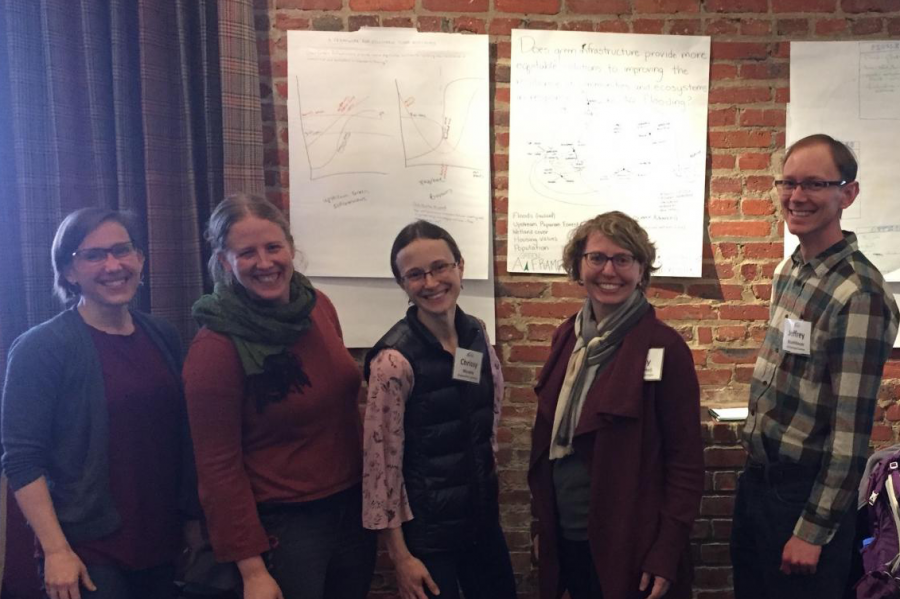
Finding solutions to address pressing global issues with social and environmental components requires researchers to collaborate across disciplines and break down traditional academic paradigms that have historically limited the creation of such cross-cutting teams. Doing so can be both challenging and rewarding. Although there is no one-size-fits-all formula for this process, many researchers are finding innovative ways to work together and pave the way for this research approach.
Earlier this year, a SESYNC workshop afforded just the opportunity for one of these cross-cutting, interdisciplinary research teams to form. Led by Principle Investigator Emily Bell, a postdoctoral fellow at Duke University, the team emerged from a group of early-career researchers whose expertise spanned the fields of ecology and engineering to policy and governance. Finding synergies among areas of research that can at times feel disparate was the first obstacle they needed to overcome. Ultimately, the researchers came together over their shared interest in environmental justice.
Team member Holly Yaryan Hall, a PhD candidate from the University of Georgia recalls their initial moment of connection during a group activity where “we all began to coalesce…by the group who had selected equity and environmental justice.” This topic was the foundation of their collaboration and provided the epistemological grounding for their project proposal entitled “Modeling Trade-Offs and Equity Impacts of Flood Hazard Mitigation.”
Holly went on to describe her experience with collaborative research, explaining that in her background as a “consulting engineer, so much of my work in stream restoration was interdisciplinary by nature, but this experience was like taking it up to another level.”
While each of the group members had some experience in interdisciplinary research, they shared that none of them had successfully formed a collaboration and submitted a proposal in just a couple of months. Once the workshop ended, it became imperative for the group to maintain momentum and motivation across virtual platforms. As the project developed, the group began to identify gaps in expertise and then recruited additional team members to build the breadth and dimensions of the proposal.
The group’s PI, Emily Bell, attributed much of the group’s success to the willingness of each member to meet regularly and pitch in by bringing their expertise to the table. Her leadership and agenda setting drove the group to meet deadlines and accomplish their collaborative goals. This process allowed Emily to ask critical questions that are key to interdisciplinary research, like, “What is the audience we are writing for?” “What are we affecting in the world?” and “How are we making a difference?”
Ultimately, this group of early-career scientists found that the key ingredients to overcoming the obstacles of interdisciplinary collaboration were: finding common research interests, identifying expertise, playing to team members’ strengths, and clearly defining leadership.
With the proposal submitted, the group said that going through this process has influenced not only how they think about their own disciplines but also how they collaborate with people from other fields. Christina Murphy, a postdoctoral fellow at Oregon State University described the impact of her experience working with this team saying, “It’s hard to think that it wouldn’t have impacted all of us in some way—working on a proposal that is typically outside of what I would spend the majority of my time working on is an exercise in thinking outside the box and connecting with people that are thinking in different ways.”